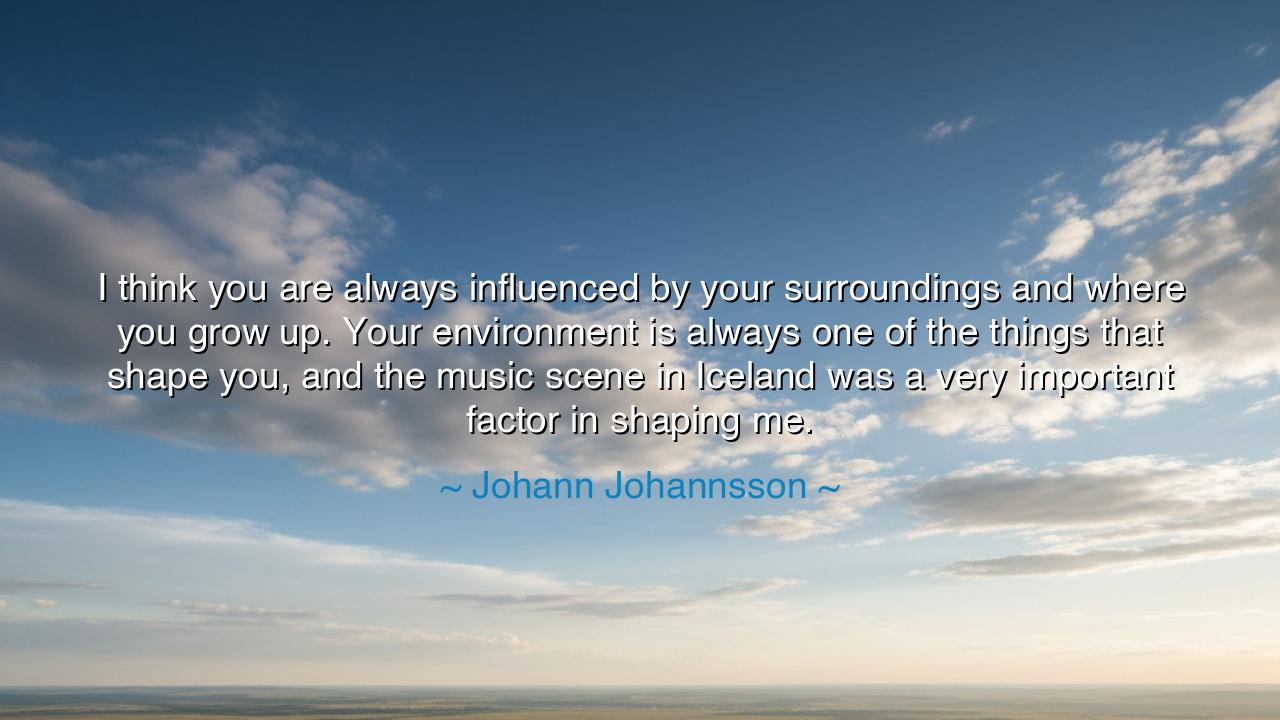
I think you are always influenced by your surroundings and where
I think you are always influenced by your surroundings and where you grow up. Your environment is always one of the things that shape you, and the music scene in Iceland was a very important factor in shaping me.






“I think you are always influenced by your surroundings and where you grow up. Your environment is always one of the things that shape you, and the music scene in Iceland was a very important factor in shaping me.” Thus spoke Jóhann Jóhannsson, composer of haunting beauty, whose music echoed the glaciers, the winds, and the deep silences of his homeland. In these words lies a truth older than empires: that no soul is born in a vacuum, but is molded by the environment, by the land, the people, the culture, and the unseen forces of place.
The ancients would have said: “As the tree is bent by the wind, so the spirit is bent by the land it inhabits.” Jóhannsson’s art, steeped in the music scene of Iceland, was not merely a product of his imagination, but a reflection of the landscapes that raised him. The mountains, the darkness of long winters, the strange light of endless summers, and the vibrant yet intimate artistic circles of his nation—all pressed themselves upon his soul, and from them emerged his sound: austere, profound, timeless.
Consider the tale of Beethoven, who grew up in the shadow of hardship, in a home marked by poverty and a stern father. His surroundings shaped him, for the turbulence of his youth carved into his soul the deep wells of passion and struggle that would later pour forth in his symphonies. Though his genius was innate, it was sharpened by the environment that forged him, just as steel is hardened in fire.
Or recall the life of Langston Hughes, the great poet of the Harlem Renaissance. Born into a segregated America, his surroundings—the laughter, pain, music, and oppression of his community—shaped his words. From those streets came verses that carried the voice of an entire people. He, like Jóhannsson, was proof that one’s art is never detached from one’s environment, but always rooted in the soil of upbringing and place.
The meaning of Jóhannsson’s words is clear: to understand ourselves, we must first understand the environment that shaped us. The places we grow, the people we meet, the culture we inherit—these are the silent sculptors of our identity. Even when we believe ourselves free and original, we carry the imprints of our surroundings, and our creations—whether art, speech, or deed—bear their mark.
The lesson, then, is profound: do not dismiss the power of your surroundings. Honor them, learn from them, even if they are harsh. If they are beautiful, let them inspire you. If they are difficult, let them strengthen you. Know that the soil in which you are planted shapes your growth, but also remember that you may choose how to bear fruit from it.
Practical counsel follows: seek to understand the forces that shaped you—your culture, your community, your family, your land. Ask yourself how they have molded your mind and heart. If they burden you, transform that weight into art, wisdom, or resilience. If they uplift you, pass on their beauty to others. And when you create, whether in music, in work, or in life, do not be ashamed of your roots—let them sing through you.
So remember this, O children of tomorrow: you are the echo of your environment, the song of your homeland, the breath of the culture that bore you. As Jóhann Jóhannsson declared, it shapes you, whether in silence or in music. Honor it, learn from it, and carry it with you, for in knowing where you come from, you will discover the strength to shape where you are going.






AAdministratorAdministrator
Welcome, honored guests. Please leave a comment, we will respond soon